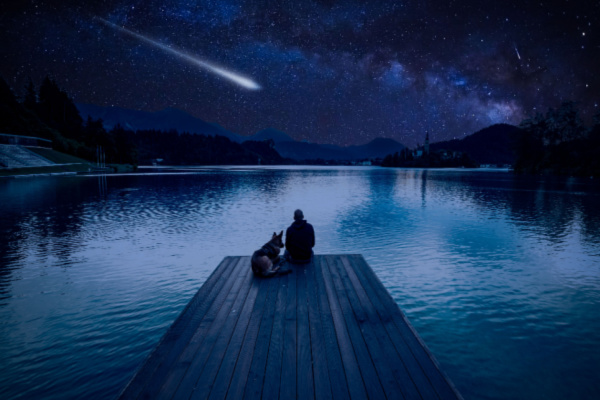April was an exciting month for stargazers and space enthusiasts thanks to an outburst of northern lights, the first meteor shower since early in the winter and an explosive inaugural launch of SpaceX’s newest rocket.
But there are more must-see celestial events are lined up in the first week of May, including another meteor shower, the Full Flower Moon, and the first lunar eclipse of the year. Plus, temperatures are still trending up, meaning stargazers will have more comfortable conditions while looking up at the cosmos.
So get your telescope ready and open up your calendar, so you don’t miss the upcoming astronomy events in May.
May 5: Full Flower Moon
As the saying goes, April showers bring May flowers, and the blossoming plants during this time of year are the inspiration behind the first big astronomy event of the month.
The Full Flower Moon will rise on Friday, May 5, a nickname for May’s full moon due to the abundance of colorful flowers during spring. Other nicknames for the upcoming full moon include the Budding Moon, Planting Moon and Egg Laying Moon.
The first lunar eclipse of 2023 is also in the offing on the night of the full moon, but it will not be visible around the entire world.
A penumbral lunar eclipse will be visible around most of the world, except for those in North America and South America, on the night of May 5 into May 6. However, folks across the Americas will not be missing out on much. A penumbral lunar eclipse can be imperceptible, even to people who know it is happening, as only a small area of the moon will appear slightly darker than average during the height of the event.
May 5–6: Eta Aquarid meteor shower
According to AccuWeather, meteors will return to the night sky just two weeks after the Lyrids as the Eta Aquarid meteor shower, the final meteor shower of spring, reaches its peak.
The culmination of the Eta Aquarids typically brings 10 to 30 meteors per hour in the skies over the Northern Hemisphere and as many as 50 per hour across the Southern Hemisphere. However, stargazers should temper expectations this year.
The peak night for the meteor shower is projected to be May 5, the same night as the full moon. Moonlight will illuminate the sky all night, outshining all but a few shooting stars. For the best chance at spotting meteors on peak night, it is best to focus on darker areas of the sky without the moon in sight.
The next moderate meteor showers will not take place until the middle of summer with the Southern delta Aquarids and the alpha Capricornids both peaking on the night of July 30 into July 31, according to the American Meteor Society.
—
Photo Credit: marcin jucha / Shutterstock.com
